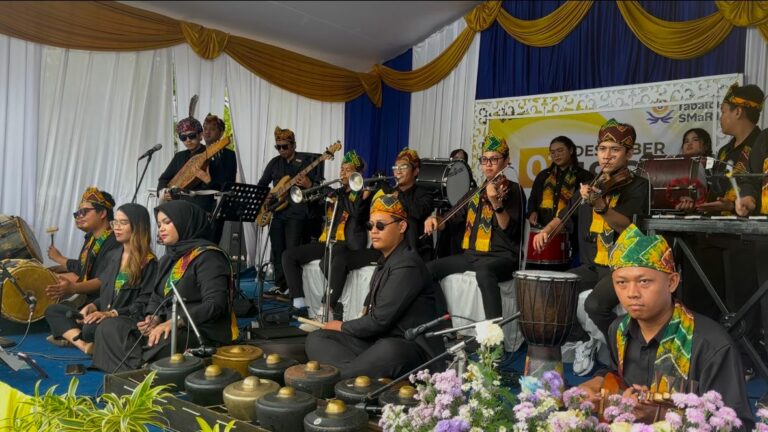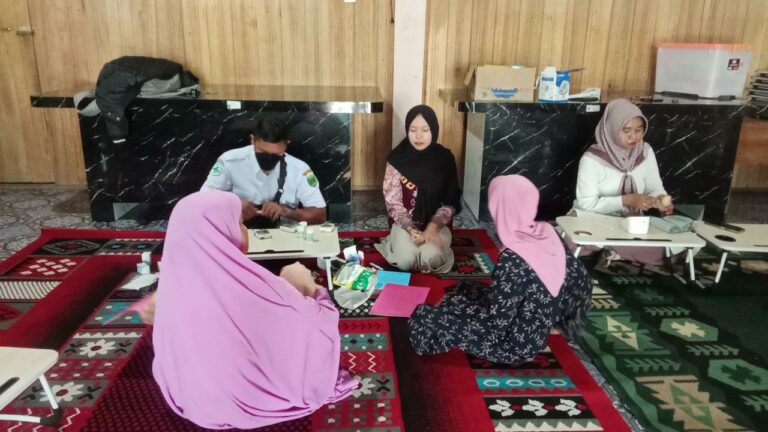Toward the Heart of Borneo: Exploring Tarian Adat Kalimantan Tengah
Tarian Adat Kalimantan Tengah: A Time-Honored Traditional Dance
Indonesia is a nation of diverse cultures, where every region has its customs, traditions, and artistic expressions. From the delicious culinary heritage to the breathtaking nature and rich folklores, Indonesia has an endless charm that continues to mesmerize travelers around the world. One of the unique cultural treasures of Indonesia’s Kalimantan region is its traditional dance, known as Tarian Adat.
Tarian Adat is a broad term that encompasses various dancing styles performed on different occasions, each with its distinctive features and meanings. In Kalimantan Tengah, a province located in the heart of Borneo, Tarian Adat plays an essential role in the local community’s social, cultural, and spiritual life. This article aims to understand and appreciate Tarian Adat Kalimantan Tengah’s uniqueness, its history, meaning, and how it reflects the local culture.
The Roots of Tarian Adat Kalimantan Tengah
Before delving into Tarian Adat Kalimantan Tengah, we need to take a glimpse at the region’s history and cultural diversity. Kalimantan Tengah, also known as Central Kalimantan, is a land of a thousand rivers. Its vast and lush forests, mountains, and wetlands provide a diverse habitat for flora and fauna, including endangered species such as orangutans, proboscis monkeys, and sun bears. The region is also home to many ethnic groups, each with their traditional way of life, beliefs, and customs.
Some of the ethnic groups living in Kalimantan Tengah are the Dayak, Banjar, Javanese, Malay, and Chinese. The Dayak people, who are the largest ethnic group in the region, have lived in the forests for centuries, practicing animism, which emphasizes the belief in spirits in nature. The Dayak culture is rich in oral traditions, arts, and crafts, including traditional dances such as Tarian Adat.
Tarian Adat Kalimantan Tengah has its roots in the Dayak culture, primarily the Ngaju Dayak, who live in the region’s upper Kahayan river basin. According to Dayak mythology, Tarian Adat was created by the gods and taught to humans as a way to communicate with the divine realm. Tarian Adat serves various purposes, such as celebrating harvest festivals, marking important life events, entertaining guests, and invoking spirits.
The Characteristics of Tarian Adat Kalimantan Tengah
Tarian Adat Kalimantan Tengah is a dynamic and expressive dance, characterized by fluid movements, vibrant costumes, and lively music. The dance portrays various themes, including love, nature, war, and spirituality, and is performed by both men and women. The dancers wear traditional attire, which differs based on the occasion and the ethnic group.
For example, the Ngaju Dayak women wear colorful skirts adorned with intricate embroidery and jewelry. The men wear loincloths, headdresses, and accessories made from feathers, beads, and bones. The costumes reflect the Dayak’s connection to nature and their reverence for its beauty and power.
The music accompanying Tarian Adat Kalimantan Tengah is equally diverse and enchanting. The Dayak people use various traditional instruments, such as the gong, bamboo flute, and xylophone. The music has a rhythmic and melodic quality, conveying emotions, and moods that complement the dance’s narrative.
Types of Tarian Adat Kalimantan Tengah
Tarian Adat Kalimantan Tengah consists of different types, each with its themes, costumes, and dances. Here are some of the most popular types of Tarian Adat Kalimantan Tengah.
- Tari Perayaan: Performed during celebrations such as weddings, harvest festivals, and religious events.
- Tari Wirayuda: Depicts the heroic exploits of the Dayak warriors.
- Tari Remong: Celebrates the arrival of guests and acts as a welcoming dance.
- Tari Baluse: Depicts the unity and cooperation among Dayak women during work, such as planting rice.
- Tari Hatengku: Depicts the Dayak’s connection with nature and their reverence for the environment.
The different types of Tarian Adat Kalimantan Tengah offer a glimpse into the region’s culture, history, and daily life. They showcase the creativity, spirituality, and social values of the Dayak people and their contribution to Indonesia’s cultural heritage.
The Significance of Tarian Adat Kalimantan Tengah
Tarian Adat Kalimantan Tengah holds significant cultural, social, and spiritual meanings for the Dayak people and the local community. It serves as a medium for preserving and transmitting the Dayak culture’s values, beliefs, and traditions to future generations. Through Tarian Adat, the Dayak people express their identity, creativity, and spiritual connection with nature and the divine realm.
Tarian Adat Kalimantan Tengah also plays a crucial role in promoting social cohesion, cooperation, and unity among the community members. It fosters a sense of community spirit and shared identity, creating a bond that transcends ethnicity, religion, and social status. Hence, Tarian Adat Kalimantan Tengah is more than just a form of entertainment. It is a vital component of the local community’s social and cultural fabric.
FAQs
What is Tarian Adat?
Tarian Adat is a traditional dance performed in various regions of Indonesia to celebrate and mark important life events.
What is Tarian Adat Kalimantan Tengah?
Tarian Adat Kalimantan Tengah is a traditional dance performed in Central Kalimantan, Indonesia, by the Dayak people. It portrays various themes, including love, nature, war, and spirituality, and is characterized by fluid movements, vibrant costumes, and lively music.
What is the history of Tarian Adat Kalimantan Tengah?
Tarian Adat Kalimantan Tengah has its roots in the Dayak culture, primarily the Ngaju Dayak. According to Dayak mythology, Tarian Adat was created by the gods and taught to humans as a way to communicate with the divine realm. Tarian Adat serves various purposes, such as celebrating harvest festivals, marking important life events, entertaining guests, and invoking spirits.
What is the significance of Tarian Adat Kalimantan Tengah?
Tarian Adat Kalimantan Tengah holds significant cultural, social, and spiritual meanings for the Dayak people and the local community. It serves as a medium for preserving and transmitting the Dayak culture’s values, beliefs, and traditions to future generations. Through Tarian Adat, the Dayak people express their identity, creativity, and spiritual connection with nature and the divine realm.
What are the different types of Tarian Adat Kalimantan Tengah?
The different types of Tarian Adat Kalimantan Tengah include Tari Perayaan, Tari Wirayuda, Tari Remong, Tari Baluse, and Tari Hatengku, each with its themes, costumes, and dances. They offer a glimpse into the region’s culture, history, and daily life and showcase the creativity, spirituality, and social values of the Dayak people and their contribution to Indonesia’s cultural heritage.
In conclusion, Tarian Adat Kalimantan Tengah is a time-honored traditional dance that reflects the rich culture, history, and traditions of Central Kalimantan. Its dynamic and expressive movements, vibrant costumes, and lively music offer a glimpse into the Dayak people’s way of life, values, and spiritual beliefs. Tarian Adat Kalimantan Tengah is not only a form of entertainment but also a vital component of the local community’s social and cultural fabric, promoting cohesion, cooperation, and unity among its members.



